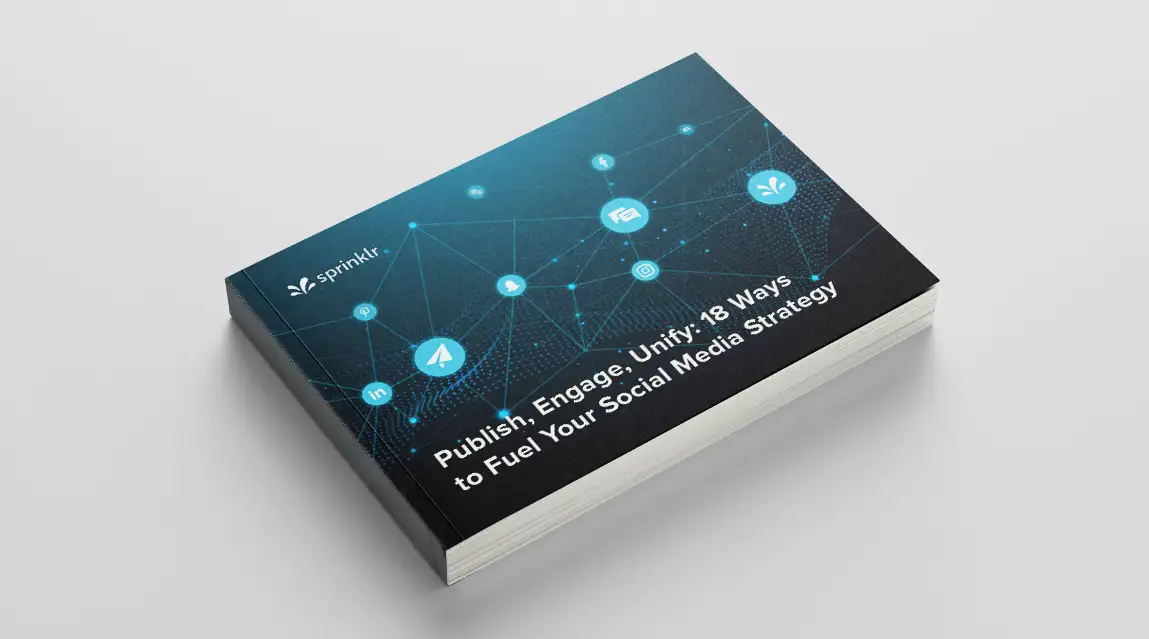The global leader in enterprise social media management
For over a decade, Sprinklr Social has helped the world’s biggest brands reimagine social media as a growth driver with a unified platform, industry-leading AI and enterprise-grade scale.

6 common social media publishing challenges (and how to overcome them)
Write the copy, pick an image, schedule the post. Sounds simple enough. But as the social media manager of a large global brand, you know there are a number of factors to consider when publishing on social media: messaging, channels, campaigns, geography, approvals, and metrics. It’s a balancing act that requires careful curation and coordination.
Many social teams struggle to ensure accuracy, timeliness, and optimal engagement. This fragmented, subpar customer experience stems from the following common social media publishing challenges:
- 1. Difficulty tailoring messages to specific channels
- 2. Highly manual processes to deploy across multiple channels and timezones
- 3. Poor visibility into the editorial calendar
- 4. Cumbersome and disjointed approvals
- 5. Difficulty identifying high-performing content for reuse
- 6. Unreliable data
- The solution
1. Difficulty tailoring messages to specific channels
Each social media channel has its own audience and voice. While the largest age group on X, formerly Twitter is 30-49 years old, Instagram users skew a bit younger. And while LinkedIn has a professional tone, TikTok is a little more cheeky.
It’s important to customize messages to each social media site in order to capture the attention of your target audience. But too many social teams are managing their brand’s messages channel by channel. These tedious, time consuming, and unscalable methods make it extremely difficult to effectively tailor messages to specific channels.
2. Highly manual processes to deploy across multiple channels and timezones
When posting on social media, global companies tend to require coordination with multiple teams in various regions. If you’re using a manual process, it can be difficult to easily share and deploy content across multiple channels, accounts, and locations. The time and effort spent ensuring the posts are shared with the proper teams, in the right regions, and on the right channels becomes a frustrating experience and an inefficient use of time.
3. Poor visibility into the editorial calendar
Many social teams struggle with transparency into the editorial calendar. Whether it’s a one-off message or part of a broader campaign, there are a number of stakeholders across the organization, from sales to customer service, who need to know when you’re publishing content. What’s planned isn’t necessarily always what’s executed due to disconnected tools and misaligned priorities. Lack of visibility can lead to inconsistent messages, inefficiency and frustration.
4. Cumbersome and disjointed approvals
Social media teams require the flexibility to post timely, relevant messages. Reviews and approvals ensure brand safety and consistent messaging. But they can also be a major roadblock in your processes and can quickly derail your initiatives. When there aren’t standardized workflows that entail quick, easy approvals, bottlenecks form that lead to missed opportunities and delayed campaigns.
5. Difficulty identifying high-performing content for reuse
When you’re posting several times a day on multiple channels, creating content from scratch over and over is unrealistic and leads to burnout. A great way to avoid this is by identifying what’s already working on your channels. But many social teams struggle to pinpoint what’s performing well. And if you don’t know what’s working, your strategy will be opinion-driven, not data-driven, and risks serving up ineffective content to your audience.
6. Unreliable data
The best social media teams leverage analytics to make strategic decisions about their posts. Things like what type of content works best, optimal times and days to post, and which hashtags to use. But when data sits on multiple channels or is inconsistent and unreliable, it can be difficult to sift through the metrics to find actionable insights.
The solution
Although there are various challenges that social media marketers face, there’s one simple solution: a unified customer experience management (Unified-CXM) platform. The right technology platform can enable you to reach customers quickly, efficiently, and at an unprecedented scale.
With a Unified-CXM platform, your social team can:
- Quickly tailor messages for each platform
- Easily schedule and deploy content across all channels, accounts, and locations
- Ensure everyone has visibility into the editorial calendar
- Manage reviews and approvals through a single platform
- Leverage AI to understand what content is performing well
- Use AI-powered insights to schedule content during optimal engagement times
Learn more about Sprinklr’s social media automation platform.
For more ways to improve your publishing strategy, download our ebook.


